#native brook trout
Text
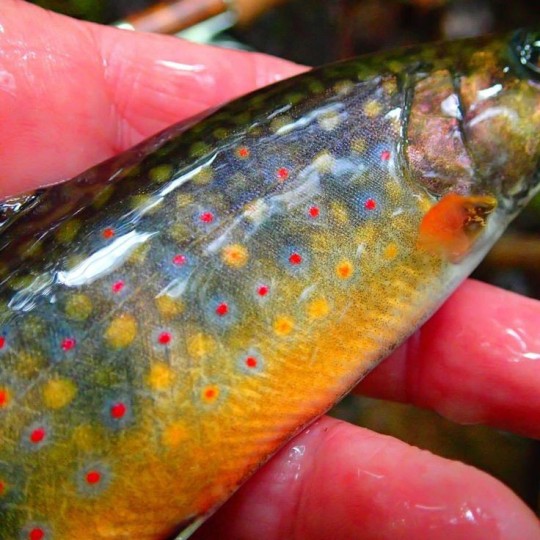


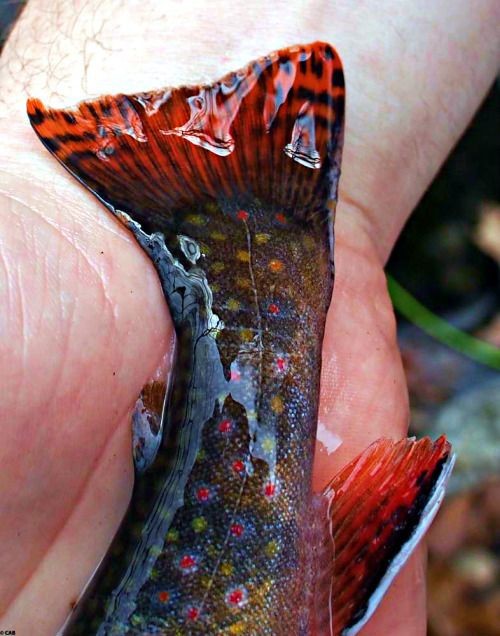
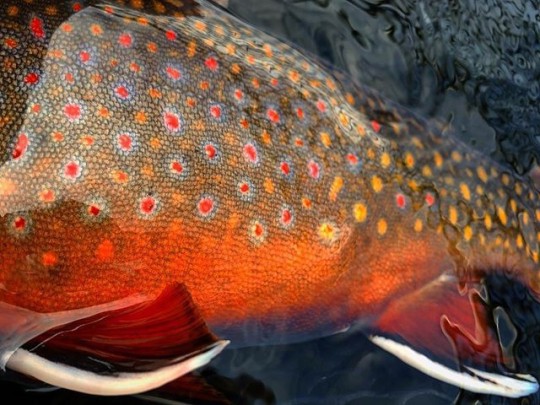
My favourite fish! Native Brook Trout.
5K notes
·
View notes
Text
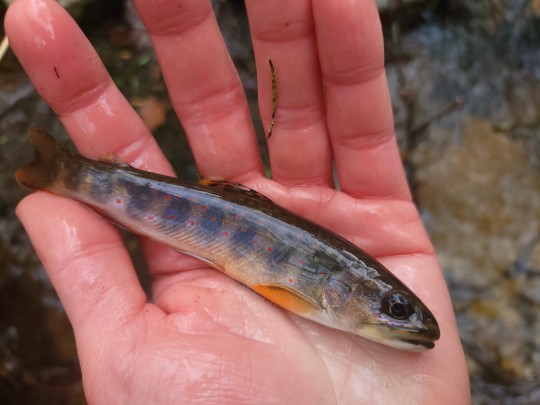


Native Pennsylvania Brook Trout
97 notes
·
View notes
Note
✨️
honestly this goes for most of my ocs, but i kinda just think of names that sound cool! very very rarely do i go out and research the meaning of names. the only character ive done that with, of recent, is nanehi! everyone else is just outta my brain.
#ipfy dot txt#ask games#anonolotls#ocs#now i do however do research on animals and what they represent!#ie feck583 is an axolotl bc i feel they would represent healing and recovery while also displaying immaturity#harvey is a brook trout bc 1. they're native to ohio [i love making native ocs] and they're endangered[?]#ill have to check that
3 notes
·
View notes
Text

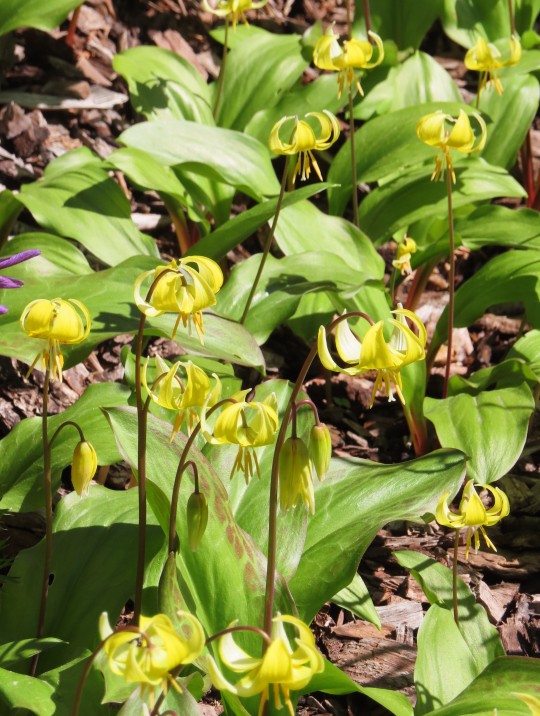

Erythronium americanum (yellow trout lily, kondo)
On my recent trip to Van Dusen Botanical Garden, I ran into several plantings of this interesting wildflower. I knew it was some kind of lily but luckily they had a stem in a labeled vase next to the entrance.
The yellow trout lily is native to eastern North America but I've never seen one growing on the west coast. It gets its name from the mottled appearance of its leaves which, supposedly, look like the skin of a brook trout. I must admit, I really have to put my imagination on 'high beam' to see the resemblance myself.
#flowers#photographers on tumblr#yellow trout lily#lily#spring flowers#fleurs#flores#fiori#blumen#bloemen#Van Dusen Botanical Garden#Vancouver
83 notes
·
View notes
Text
Daily fish fact #686
Tiger trout!

The tiger trout is a hybrid offspring of a male brook trout and a female brown trout, with wild patterns adorning their sides. Brook trout and brown trout are native to different continents, belong to different genera, and have a different chromosome count, which does leave the tiger trout infertile and makes this hybrid phenomenally rare and most often a product of hatcheries. It can occur in the wild with no immediate human intervention though, thanks to brook trout and brown trout having been introduced to other continents and having populations be close to one another (just extremely, extremely rare)!
68 notes
·
View notes
Text
It's wild how so many trout species are invasive as hell, but get a free pass because fisherman like them. Rainbow trout are invasive to most of the world, and are considered one of the worst invasive fish out there, but it is rarely acknowledged. Brown trout are invasive to North America and are a huge factor in the decline of our native brook trout here (alongside degradation of cold stream habitats), and you will still never see a fly fisherman treat them with anything but the utmost care. It feels so strange to go and do a stream health assessment on a brook trout stream in which the brookie population is possibly now gone altogether due to being outcompeted by brown trout, then see a video of a fisherman in Canada lovingly releasing a big brown trout they caught back into the wild while emphasizing how important it is to release them carefully to keep them breeding. Take it home and eat it if it isn't native, or at least naturalized where you live!!! Please!!!
#That assessment was last fall#And we found not ONE brook trout#All brown trout#So sad!!#@#And humans deliberately did that! We put them there so we could fish for them! AAAA#Funny enough. Brook trout are in turn invasive in many places.
56 notes
·
View notes
Text
Dsmp characters as fish because a special interest of mine is northeastern game fish 👍
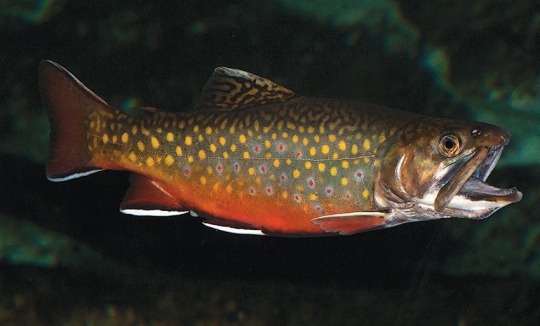
c!Ranboo - Brook trout (Salvelinus fontinalis)
Basically the loser of the fish community lmao. They are really sensitive to their surroundings. They need the water to be a certain pH and temperature in order to survive. They are migratory in order to fulfill those needs. They are also bullied by other fish (specifically brown trout) to the point where populations are dropping. They are one of the more timid and docile species of trout. They stick in small groups. They will become aggressive when feeding or defending their spawning nests. Brook trout also have some of the most unique and colorful patterns. Brook trout hybrids are common occurrences

c!Tommy - Largemouth Bass (Micropterus salmoides)
Largemouth are the fish that is in everybody’s business. They are very much in your face all of the time. Simultaneously both very smart and very dumb. They commit to one spot to make their nest and will defend it fiercely. They are picky where they put their nest and spend a lot of time maintaining it to keep it in good condition. They typically will live in the same body of water and not migrate out, but will change depths depending on the seasons and where food is located.
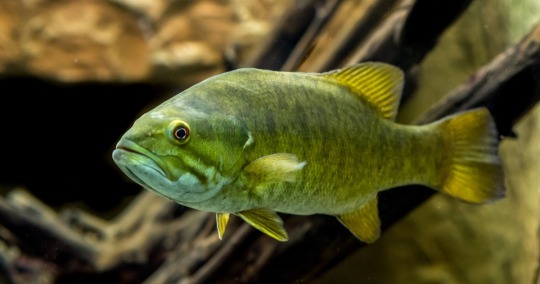
c!Tubbo - Smallmouth Bass (Micropterus dolomieu)
Basically the Largemouth’s little brother. They are very similar but the smallmouth are typically smaller and bit more docile. They are also arguably a bit smarter than the largemouth as well. They are also very territorial and will defend their nests. Their nests are also well kept. When defending or hunting, they fight like a tank. Although smaller than the largemouth they pack a bigger punch. Smallmouth are also more cold tolerant than other fish.
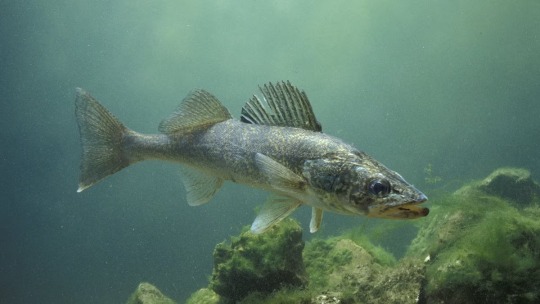
c!Phil - Walleye (Sander vitreus)
Walleye remind me of crows. They have terrific eyesight, which is why they have big eyes. Their unique eyes allow them to hunt at night. They have one of the greater lifespans and can live to be a couple decades old. Walleye spend time in schools with members similar to them. They like to lurk in deeper cooler water. They are more active at night and more docile during the day. They become aggressive when seasons change and they have to stock up for the winter
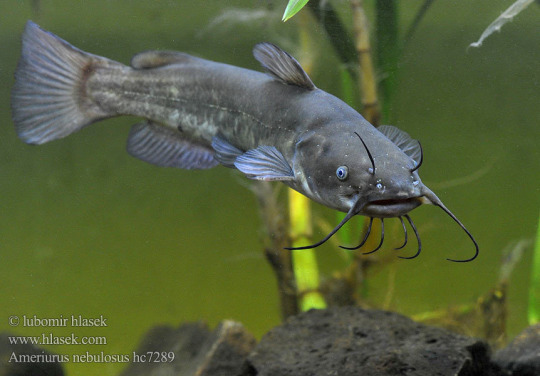
c!Techno - Bullhead catfish (Ameiurus melas)
Bullhead are similar to walleye and live in similar conditions. They like cooler murky environments to reside in. They are docile if left alone. They will become predatory and territorial if provoked or feeding. They have venomous spines on their fins which hurt like a bitch if you get stung (not fatal). They scavenge more than hunt and scrounge around the bottom looking for food. They fight hard and hit hard. And once they have something they are very determined to not let it go
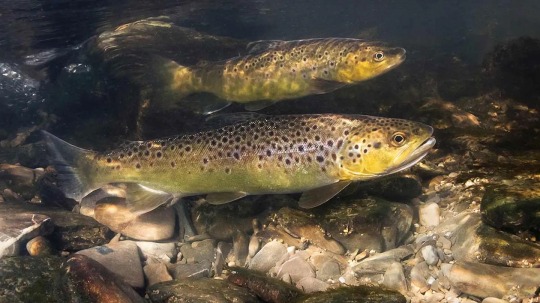
c!Wilbur - Brown Trout (Salmo trutta)
Brown trout are actually invasive and are not native to North America, they originate in parts of Europe and Asia. But they have now established themselves as part of the ecosystem. They compete with the native species and often pose a challenge. They are typically bigger than other trout species and their competitors get shoved around a bit. Browns are smart and cunning, and are very successful hunters. They are arguably the most territorial species of trout
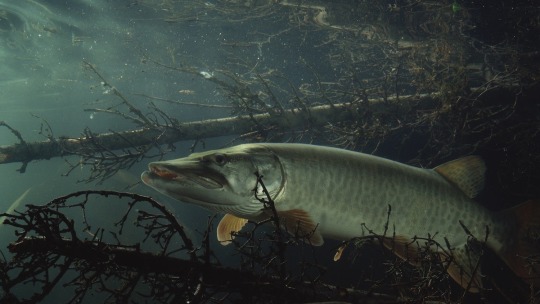
c!Quackity - Musky (Esox masquinongy)
Easily one of, if not the smartest gamefish. They are nicknamed “the fish of ten thousand casts” because they are very picky and know how to differentiate lures from real bait fish. They are hard to catch. Muskies are ambush predators and will eat anything that fits into their mouth. This includes waterfowl, rodents, and frogs. They are elusive and like to stick to themselves. Musky are very dedicated to their territory and will fight any intruders out
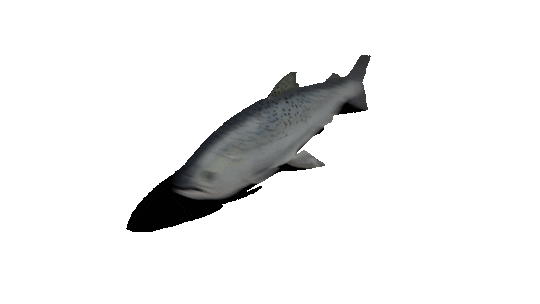
Yay fish!!!!!!!!!!!!!!!!!!!!
#disclaimer I am no professional biologist and I have heavily personified the fish lmao#this was fun I might do it with other characters#I ♥️ fish#yknow what fuck it I’ll main tag this one#c!ranboo#c!tommy#c!tubbo#c!philza#c!technoblade#c!wilbur#c!quackity#dsmp#text
205 notes
·
View notes
Text
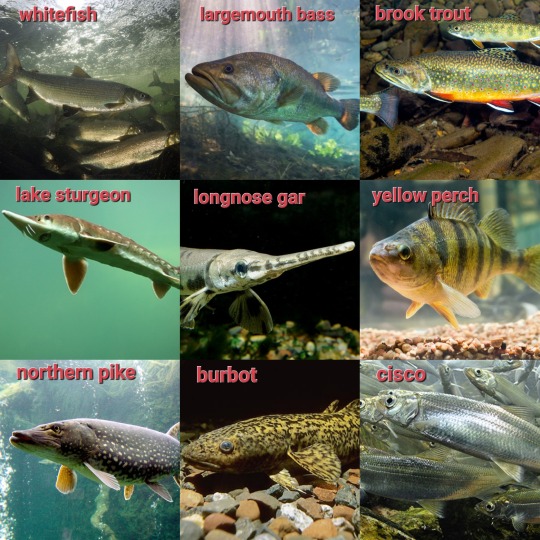
Please add other Great Lakes fish I have missed in the tags if they're you're favorite 🐟🩵 also note these are fishes native to the Great Lakes which is why no salmon
#fish#fishposting#great lakes#lakeposting#lake#midwest#poll#ecology#animals#wildlife#naturecore#nature#freshwater#freshwater ecology#biology#aquatic ecology#me#mine#water
211 notes
·
View notes
Text

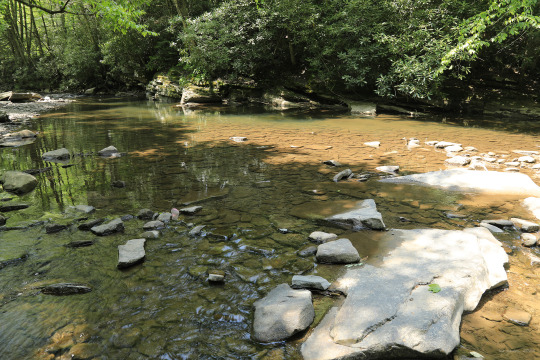
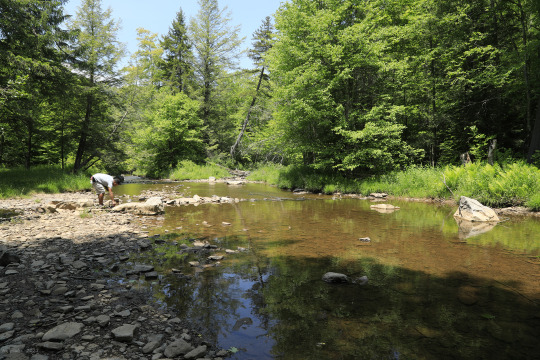
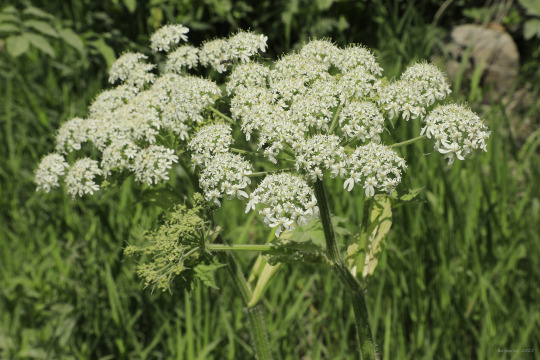




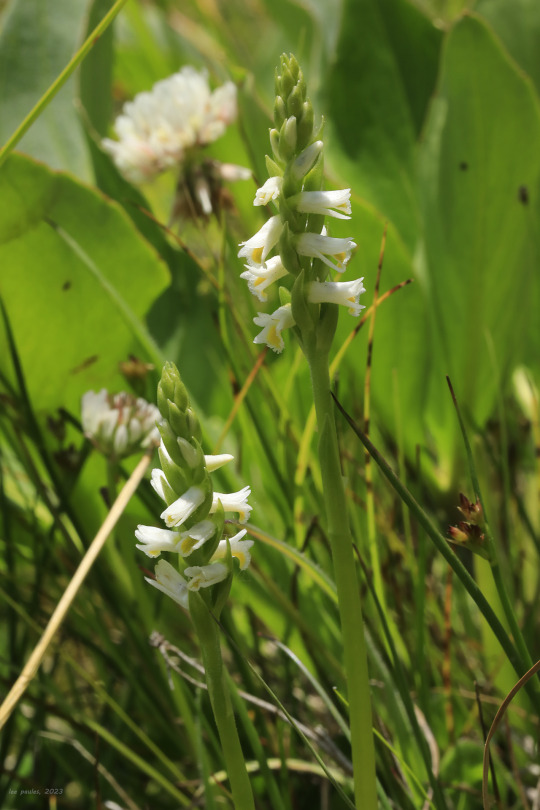
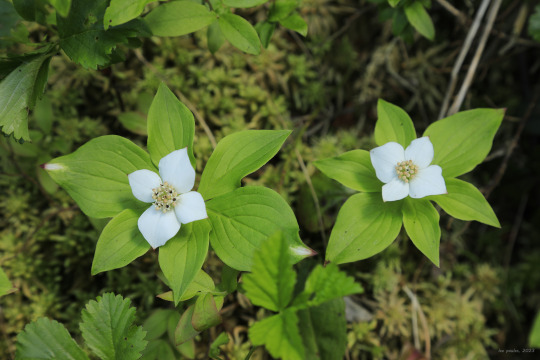

Day Date at Spruce Knob-Seneca Rocks National Recreation Area, Part 1. Most couples would probably equate a "date" to a nice dinner out and a Marvel adventure movie, but Blake and I, being hopeless nature fanatics and aspiring satyrs without hooves, equate it to mean "putzing around in the mountains". The timing was perfect: the haze from the Canadian wildfires, which has been choking most the US Mid-Atlantic and Northeast for the past week, had mostly moved on, replaced by a crisp blue sky with a light breeze.
From top: the view from the Rich Mountain Overlook on Old Route 33, heading toward Harman; Blake communing with the mystic creek chubs in Gandy Creek, one of the best brook trout streams in the Mid-Atlantic region; cow parsnip (Heracleum maximum), a mildly phototoxic beauty that Native Americans relied on for food and medicine; a forest composition of false green hellebore (Veratrum viride), ferns, wild geranium (Geranium maculatum), and golden Alexander (Zizia aurea); a close-up of golden Alexander, a lovely, spring-blooming member of the carrot family; the wetlands complex at Spruce Knob Lake; shining ladies' tresses (Spiranthes lucida), a spring to early summer-blooming bog orchid recognizable from its bright yellow labellum; bunchberry (Cornus canadensis), which can be easily mistaken for a spring-blooming forb but is actually a dwarf dogwood; and a feisty eastern garter snake (Thamnophis sirtalis sirtalis), whose saliva contains a mild neurotoxin that is deadly to its prey but harmless to humans.
#appalachia#vandalia#west virginia#wildflowers#spring#flora#allegheny mountains#monongahela national forest#spruce mountain#spruce knob lake#gandy creek#spruce knob-seneca rocks national recreation area#reptile#snake#eastern garter snake#cow parsnip#false green hellebore#wild geranium#golden alexanders#golden zizia#golden alexander#shining ladies' tresses#bunchberry#creeping dogwood#canadian dwarf cornel
132 notes
·
View notes
Text
Onondaga Nation Celebrates First Land Return of 1,000 Acres in New York's Tully Valley Following Legal Settlement https://www.goodnewsnetwork.org/onondaga-nation-celebrate-first-substantial-land-return-with-1000-acres-of-new-yorks-tully-valley-won-in-legal-settlement/
In a rare moment of return for East Coast Native Americans, the Onondaga Nation has had 1,023 acres of ancestral land in New York state returned to them.
The land in the Tully Valley includes the headwaters of Onondaga Creek, more than 45 acres of wetland and floodplains, and approximately 980 acres of forests and fields.
The agreement is a result of the March 2018 Natural Resource Damage Assessment and Restoration (NRDAR) settlement between the Natural Resource Trustees and Honeywell International, Inc.
Honeywell, manufactures of household appliances like air conditioners, were found to have been polluting Onondaga Lake in the Tully Valley, Central New York, for almost 100 years, and it had begun to spill into neighboring Onondaga lands.
They have settled on orders to pay $5 million dollars to the Natural Resource Trustees, give the 1,023 acres of land over to the Onondaga, restore several hundred acres of polluted area, and construct 18 projects related to conservation and recreation, of which 7 have been completed.
“It is with great joy that the Onondaga Nation welcomes the return of the first substantial acreage of its ancestral homelands. The Nation can now renew its stewardship obligations to restore these lands and waters and to preserve them for the future generations yet to come,” said Onondaga Nation Chief Tadodaho Sidney Hill.
For the Onondaga people, Onondaga Lake and Onondaga Creek are sacred. They are considered living relatives, central to the Onondaga worldview and spirituality, the tribe detailed in a statement.
Secularly, the cold waters of Onondaga Creek support a small population of brook trout, a population which may be fully restored with proper stewardship. The wetlands, floodplains, forests and fields are home to wildlife such as great blue heron, songbirds, waterfowl, hawks, bald eagles, frogs, bats, and other mammals including white-tailed deer.
“We look forward to drawing upon the Onondaga Nation’s expertise and Indigenous knowledge in helping manage the area’s valuable wildlife and habitat,” said Sect. of the Interior, Deb Haaland.
It’s more common now than ever that tribal nations are recovering rights to use their ancestral lands as they always had, but for tribes in the super-developed Mid-Atlantic region, these opportunities are rare.
However as the Onondaga point out, recent world-wide land surveys have shown that 80% of the world’s biodiversity is currently located in areas stewarded by indigenous peoples, or lands contested as such, despite the fact this amounts to less than half the land of the planet.
As such, they are keen to show what indigenous stewardship can bring to the biodiversity of America’s East Coast, and the current plan with state officials is to turn the Onondaga Lake and Tully Valley into a wildlife sanctuary, but one with ample opportunities for recreation, as Honeywell were ordered to construct many boat launching sites along the lake and rivers.
578 notes
·
View notes
Text
Fish of the March of Maedhros
Flora, fauna, geography and environment masterlist
Two prominent rivers run in the March of Maedhros. Southeast of the Hill of Himring in the foothills of the March is the river Celon, a tributary to the river Aros which itself is a tributary to Sirion. Upon the hill of Himring is a spring from which flows little Gelion, the stream that meets Gelion to form one of the seven rivers of Ossiriand. 
A variety of freshwater fish can be found in these rivers. I also headcanon there is at least one lake where fish are found and sometimes caught.
Note: due to differences in proximity to the sea, temperature, and unknown factors, such as speed of water, even more than my other animal posts. A lot of these are going to be approximations on real species and their morphology and behavior rather than exact replicas so just keep that in mind. I also headcanon that the March is a strange place.
As I will, as always, I will include some world building notes at the bottom!
Found in the upper reaches of Celon: (a species similar to) giant Siberian trout, freshwater cod, freshwater lamprey (river and brook), white eyed bream, common barbel
Found in little Gelion: rainbow trout, common bream (in slower stretches), common bleak, riffle minnow (slow stretches), common minnow
Both: freshwater eels, Cottus koshewnikowi, asp, freshwater sculpin, alpine bullhead, silver carp
Found in lakes: Arctic char, dwarf sculpin, Abyssocottus elochini, red sculpin, Omul, Coregonus maraena, ide, other minnow species
The lakes, ponds and deeper rivers of the March also contain stranger creatures including iridescent eels, creatures between fish and something else, shadowed giants never seen in their full size and more
World building notes:
-Fish are eaten in the March, both fresh and salted. Indeed dried or salted fish is rare in other elven realms (however both dwarven and human cultures have it more frequently). Roe is also eaten
-Fresh fish are usually served at Himring and in the smaller outposts throughout the March. Scouts often take dried fish in their satchels but rarely catch them as they are highly trained to be inconspicuous and avoid fires to cook
-Fishing in the March is done throughout the year however it can be extremely dangerous during the winter. There are those among Maedhros’s host who particularly enjoy the risk and return yearly to the icy waters.
-Fish are primarily seasoned with salt and with local herbs such as garlic chives, lovage,Rarer dishes might involves dried bay leaves from Nevrast or thyme, primarily from Ossiriand and Dorthonion, pepper from the Ered Luin, and imported wines, also from Ossiriand, Nevrast, and Thargelion
-Trout appear in Avarin lore as guides and are not eaten by them.
-Some of the strange creatures including fish that are native to the March later appear in sigils, heraldry, and art created by the host of Maedhros
39 notes
·
View notes
Text
Now, a small summary of my inbox:
PERSON LIKED "MY FAVOURITE FISH, NATIVE BROOK TROUT!"
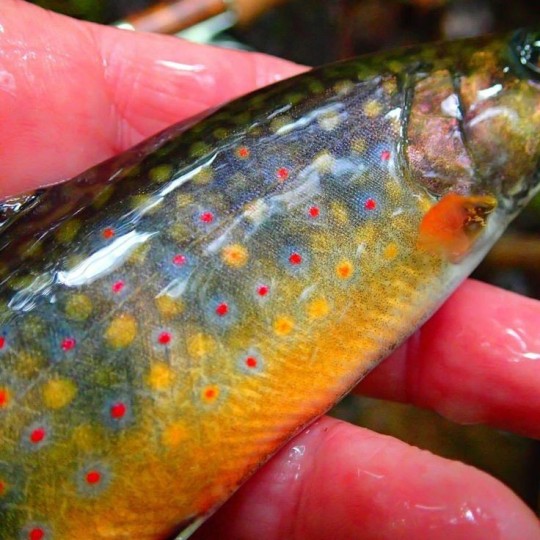








#love you guys but THREE THOUSAND NOTES FOR HIM??#actually no#continue#hes worth all the love#a wonderful man#fishblr#native brook trout#brook trout#fish
37 notes
·
View notes
Text
If anyones interested in more localized species this is one thats got a range across a few states but is still quite endangered from what I know- southern Appalachian brook trout.
I mostly know about them in relation to Tennessee because I learned about them while touring the Tennessee Aquarium conservation center a few years ago, but apparently they are the only native trout species in the area and are often outcompeted by non native species that were introduced for fishing purposes.
The conservation center has been running a breeding and reintroduction program for over a decade now I believe, it’s not a very big facility but they’ve got some cool stuff going on and also work with lake sturgeon (also how i learned about them and theyre a favorite of mine now)
5 notes
·
View notes
Photo

Author Note:
I love Fallout. I really do. I think the medium of the game sort of limits the ecosystem more than a little though. I love thinking of what sort of fucked up ‘evolutionary’ shirt might happen to the wildlife (particularly near the Big MT where we KNOW they’ve been experimenting.) So, I was thinking of Mojave native animals and what a crazy scientist might combine if they wanted to make THE ULTIMATE CREATURE-- and so I present to you the Wallawail. (A quail, chuckwalla, and brook trout all combined for an easily breed-able food source but the project was abandoned and the result escaped into the Mojave. I figure the Wallawail is a species that benefits from living near people (particularly farmers) and the farmers in turn benefit as well since Wallawail are natural predators of the large mutated aphids and other abnormally sized insects of the wasteland. They also are a natural deterrent to Molerats as the Molerats drown in the watery tunnels. Wallawail burrows are usually watery and go deep, deep underground into the natural underground water systems and ultimately are in-fuckin-possible to get rid of-- the only way one might get rid of a burrow is by poisoning the water but uh, that of course would be a fucking stupid thing to do.
#webcomic#comic#Venom Casserole Comic#fallout#fallout new vegas#yes I spent WAY too much time thinking about how a Wallawail exists#I think they also open their mouths like a fucking potoo bird#with was partially why the project was abandoned by Big MT#Because when your food goes between looking adorable and then offputting#you kinda end up not wanting to eat it#also the scientist in question MAY have introduced a gene that causes the Wallawail meat to have a very mild paralytic quality#because that seems like something a Big MT researcher might do tbh#I think the name comes from someone saying 'looks like a mutated chuckwalla'#and the other person said 'walla-what?'#and someone walking by said 'quail'#so it became a Wallawail.#I also think it screams like a toddler on fire if it's threatened or injured#I think about these little dudes too much
23 notes
·
View notes
Text

NPS Photo of MORA aquatics technicians weighing a fish as part of the process to collect a genetic sample.
Genetic and Environmental DNA (eDNA) Sampling to Monitor Fish & Amphibian Populations
Mount Rainier National Park is the headwaters of several, complex, cold-water river and lake systems. Many aquatic species can be found in these systems, including threatened native bull trout, non-native brook trout, and many species of amphibians. Dolly Varden, another species of char, may be present within the park, but are not yet documented.
The low population density and remoteness of these aquatic organisms in the park make biological surveys costly and require a high effort by park staff. Through the sampling of environmental DNA (eDNA) in water, park staff can use this tool to gather a full picture of where fish and amphibians are present in the park. Genetic sampling is another tool to better understand the origins and distribution of fish species present in the park. Appearance alone may not be enough to distinguish a non-native fish from a native fish, or a potential hybrid. With these two methods of aquatic sampling, park staff can better manage and protect aquatic organism populations. The park can understand the distribution of stocked non-native fish and the extent of hybridization of fish which can better inform recreational and conservation management decisions.
To date, Mount Rainier National Park technicians have collected twenty-eight eDNA samples. The White River, Puyallup, Mowich, and Carbon River watersheds have been targeted due to their potential overlap of char species. Park staff have also collected a variety of genetic samples throughout the park from a range of fish species in lakes and streams including bull and brook trout, rainbow and cutthroat trout, and coho salmon. This work continues during the 2022 season.
Read more in the “Fish & Amphibian Inventory: Genetic and Environmental DNA (eDNA) Sampling” science brief.
~kl
#Rainier Science#Mount Rainier National Park#eDNA#genetic sampling#wildlife#wildlife monitoring#fish#amphibians#bull trout#brook trout#fishing
16 notes
·
View notes
Text
Animal Crossing Fish - Explained #214
Brought to you by a marine biologist and a trout who is a char...
CLICK HERE FOR THE AC FISH EXPLAINED MASTERPOST!
We’ve talked about the trouble with common names before. If an animal has a large range, then it just happens that people in different places or even professions call the animal something different. For me personally, there are quite a few marine fish who basically have 3 or more names - their common name, their scientific name, and the fisherman’s name. It also happens that multiple species get called something - like “bass” and “trout” - and the name becomes kind of useless. So, let’s talk about the Brook Trout who falls under that curse.

So, first of all, if you don’t remember this guy being in the games, there’s good reason for that. In the English release of the very first AC game, the Brook Trout replaced the Herabuna...and then neither of them were ever seen again in an AC game. The Brook Trout doesn’t even get the luxury of being sneaky, like the Rainbow Trout and Golden Trout fiasco. It just got cut and that’s the end of it. And to tell ya, with Salmonidae, the Family that includes all of the salmon, char, trout, etc. species is well documented in AC, so, it would have been redundant. (And I know that *clearly* Nintendo doesn’t give a crap about redundancy, but sometimes it feels like they do...)
Now, I’m guessing that the Brook Trout took the Herabuna’s spot in the first game because it is primarily a North American freshwater fish. Both species had just about the same role in the games, so the replacement is pretty obvious. For native Brook Trout in the US and Canada, their range has shifted from the more Eastern side of the continent to the Northwest, due to habitat degradation and the introductions of Rainbow Trout and Brown Trout. On the other hand, Brook Trout have been introduced to a number of other places, including Europe, New Zealand, and Argentina, so, despite their native range changing, they are overall a very secure species.

By Karelj - Own work, Public Domain, https://commons.wikimedia.org/w/index.php?curid=14953913
Like “bass”, the term “trout” is used liberally with a number of species in both the Salmo genus and Salvelinus genus with the Salmonidae Family. The Brook Trout (Salvelinus fontinalis) belongs to the latter genus, which is the genus for “char”. The kicker here, is that Salmonidae may be kind of like Darwin’s finches, in that, many species have radiated into separate niches, behaviors, and areas. The number of species is highly up for debate, with the highest estimate of diversity within Salvelinus at 51 species. However, with the enormous likelihood of sub-speciation, hybridization (which is common between Brook Trout and Arctic Char, for example, especially for fish-stocking ventures), and non-native introductions, it’d be a cold day in hell before the salmon family is really figured out. So...yeah...maybe calling them all “trout” is just easier for the rest of us!
And there you have it. Fascinating stuff, no?
#brook trout#freshwater#fish#animal crossing#salmon#science in video games#animal crossing fish explained
9 notes
·
View notes